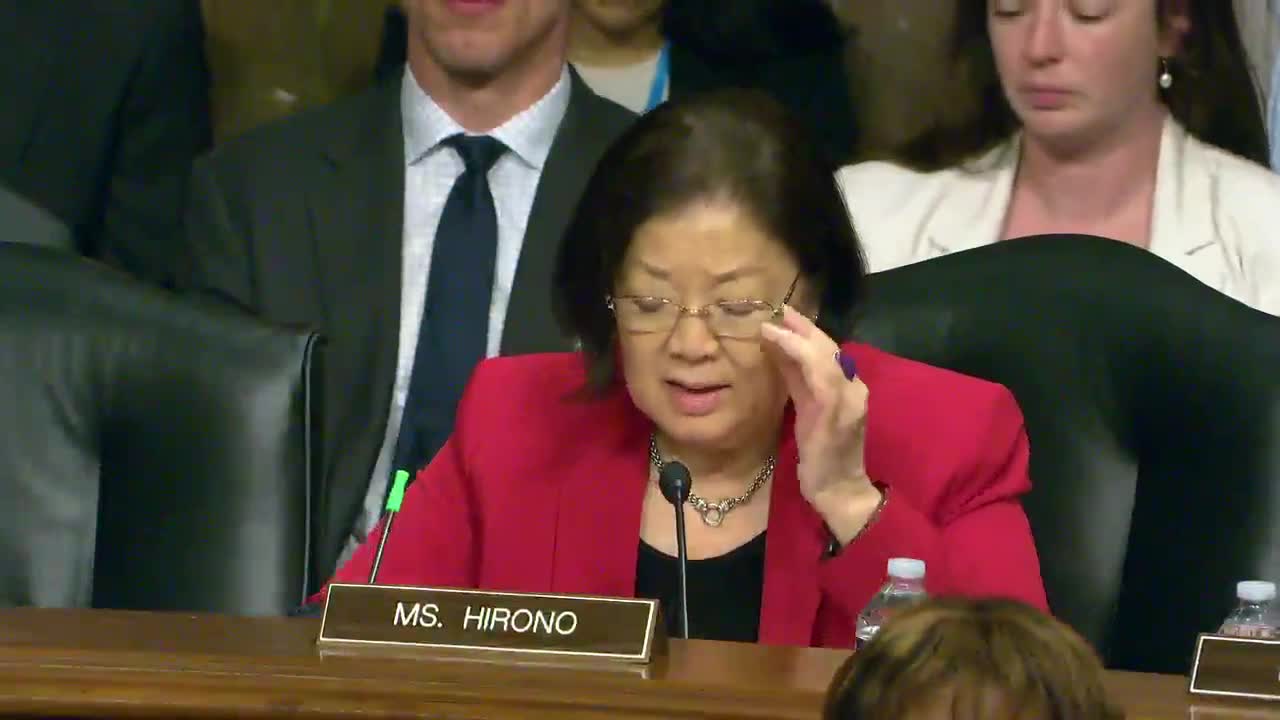Senators Reid and Shaheen question National Guards' role in immigration enforcement
June 05, 2025 | Armed Services: Senate Committee, Standing Committees - House & Senate, Congressional Hearings Compilation
This article was created by AI summarizing key points discussed. AI makes mistakes, so for full details and context, please refer to the video of the full meeting. Please report any errors so we can fix them. Report an error »

In a recent meeting of the U.S. Senate Committee on Armed Services, key discussions centered around the Department of the Army's posture in relation to the Defense Authorization Request for Fiscal Year 2026 and the Future Years Defense Program. The meeting highlighted significant concerns regarding the deployment of military personnel for domestic immigration enforcement and the importance of maintaining military readiness in the Indo-Pacific region.
One of the primary topics raised was the deployment of 10,000 soldiers and 20,000 National Guardsmen to the southern border for immigration enforcement. Senators expressed apprehension about utilizing military forces for law enforcement functions, emphasizing that such actions could stray from the military's core mission. In response, Secretary of the Army committed to ensuring that National Guard personnel would not be used for unlawful activities, addressing concerns about potential overreach in their deployment.
The discussion also touched on the critical negotiations regarding military training areas in Hawaii, which are essential for maintaining military readiness in the Indo-Pacific. Senators underscored the urgency of these negotiations, as the current leases are set to expire in 2029. The Secretary assured the committee of the Army's commitment to work closely with state officials and the local community to facilitate these negotiations, recognizing their cultural significance to the native Hawaiian community.
Additionally, the meeting highlighted the Army's innovative approaches to sustainment, particularly through advanced manufacturing solutions like 3D printing. This technology has proven effective in reducing lead times for essential parts, with one example cited involving a part that was produced for a fraction of the cost and time compared to traditional methods. The Army's support for establishing an advanced manufacturing facility in Hawaii was also reaffirmed, showcasing a commitment to enhancing operational efficiency across services.
In conclusion, the meeting underscored the Army's focus on maintaining legal and ethical standards in its operations while also addressing critical logistical and cultural issues. As negotiations continue and innovative solutions are explored, the implications of these discussions will be closely monitored by both military and civilian stakeholders.
One of the primary topics raised was the deployment of 10,000 soldiers and 20,000 National Guardsmen to the southern border for immigration enforcement. Senators expressed apprehension about utilizing military forces for law enforcement functions, emphasizing that such actions could stray from the military's core mission. In response, Secretary of the Army committed to ensuring that National Guard personnel would not be used for unlawful activities, addressing concerns about potential overreach in their deployment.
The discussion also touched on the critical negotiations regarding military training areas in Hawaii, which are essential for maintaining military readiness in the Indo-Pacific. Senators underscored the urgency of these negotiations, as the current leases are set to expire in 2029. The Secretary assured the committee of the Army's commitment to work closely with state officials and the local community to facilitate these negotiations, recognizing their cultural significance to the native Hawaiian community.
Additionally, the meeting highlighted the Army's innovative approaches to sustainment, particularly through advanced manufacturing solutions like 3D printing. This technology has proven effective in reducing lead times for essential parts, with one example cited involving a part that was produced for a fraction of the cost and time compared to traditional methods. The Army's support for establishing an advanced manufacturing facility in Hawaii was also reaffirmed, showcasing a commitment to enhancing operational efficiency across services.
In conclusion, the meeting underscored the Army's focus on maintaining legal and ethical standards in its operations while also addressing critical logistical and cultural issues. As negotiations continue and innovative solutions are explored, the implications of these discussions will be closely monitored by both military and civilian stakeholders.
View full meeting
This article is based on a recent meeting—watch the full video and explore the complete transcript for deeper insights into the discussion.
View full meeting